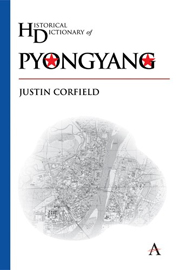C
from Historical Dictionary of Pyongyang
Summary
CEMETERIES. Traditionally, the bodies of many wealthy people were buried in tombs similar to those of the Chinese. The most auspicious places were on hillsides, and Mangyongdae, west of Pyongyang, was very popular. One of Kim Il Sung's great-grandfathers had a job tending some of the graves there. Other people followed the Japanese custom of cremating the dead.
With the advent of Christianity, there was a Christian cemetery in Pyongyang, which appears to have been located at An San, where there was also a crematorium. It was probably destroyed during the bombing of Pyongyang in 1952. The Monument to the Potong River Improvement Project is near the site of this cemetery. Nowadays, there is a large cemetery on Mount Chang in the north of Pyongyang, which seems to be the main public cemetery in Pyongyang. There is also the large Cemetery of Korean People's Army Heroes where the communists who died in the Korean War are buried.
There is a Chinese People's Volunteer Martyrs Cemetery in the Hyongjesan district to the west of Pyongyang. In the Chinese Cemetery in Hoechang County, east of Pyongyang, there are graves of many Chinese, including Mao An Ying, son of Chinese leader Mao Zedong. The exact location of these cemeteries is not known, but occasionally there are official photographs of Chinese officials laying wreaths there on 25 October each year to commemorate the Chinese People's Liberation Army entering the Korean War.
- Type
- Chapter
- Information
- Historical Dictionary of Pyongyang , pp. 20 - 41Publisher: Anthem PressPrint publication year: 2013



